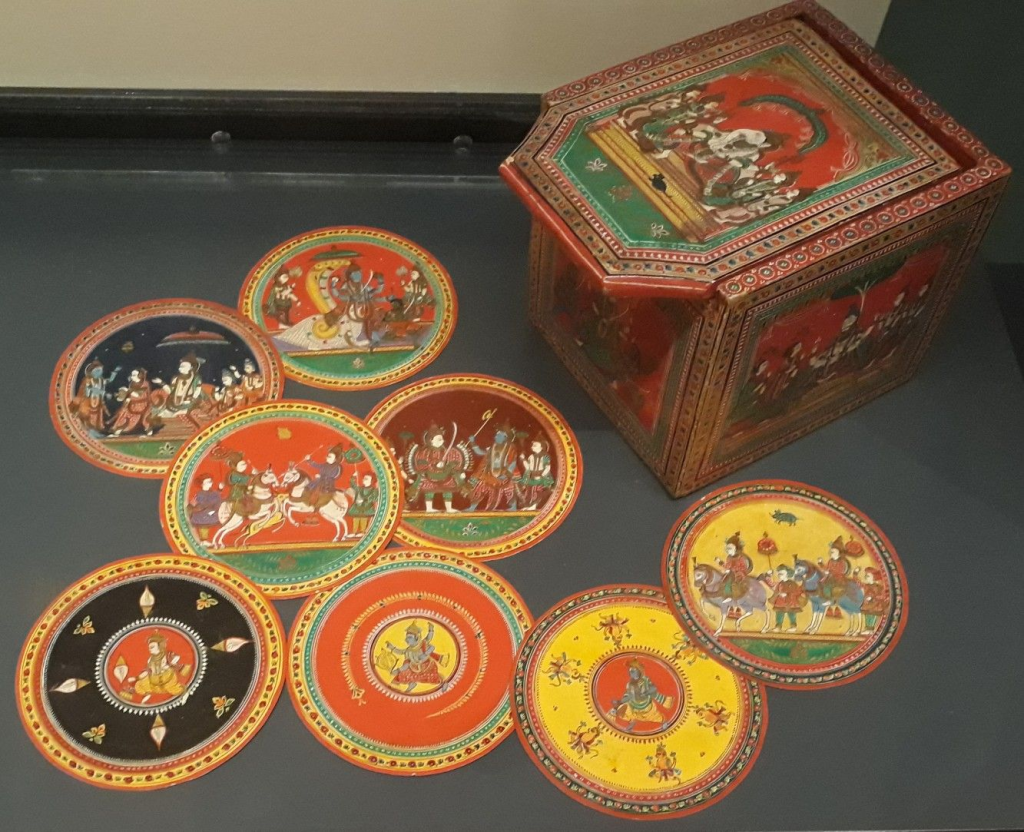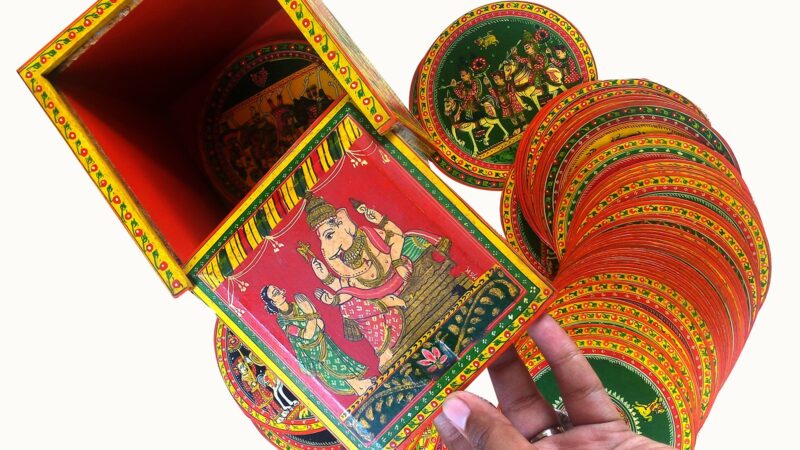Introduction:
India is a land of rich cultural heritage, where traditions and art forms have thrived for centuries. Among the many treasures of Indian art, Ganjifa cards hold a special place. These intricately designed cards have a long and captivating history, originating from ancient India. In this blog post, we will delve into the world of Ganjifa cards, explore their historical significance, discover the different variations of the game played across India, and understand their relevance in modern times.

The Origins and History of Ganjifa Cards:
Ganjifa cards trace their roots back to the Mughal era in the 16th century, although their exact origin remains uncertain. The word “Ganjifa” is derived from the Persian term “Ganjifeh,” meaning playing cards. The Mughal emperors, who were passionate patrons of art, introduced Ganjifa cards to India. The craft flourished under their patronage, gaining popularity among the royalty and nobility.
These cards were originally handcrafted using materials like ivory, tortoiseshell, and wood. Each card was a masterpiece in itself, featuring intricate paintings depicting mythological characters, courtly scenes, flora, fauna, and geometric patterns. The artists meticulously painted the cards with natural dyes and adorned them with gold and silver embellishments.
Ganjifa Cards and Regional Variations:
The game of Ganjifa is played differently across various regions of India, each with its own unique set of rules and card designs. Some of the notable regional variations include:
Mysore Ganjifa:
Mysore Ganjifa is renowned for its exquisite craftsmanship. It features ten suits, each consisting of twelve cards, resulting in a deck of 120 cards. The paintings on these cards beautifully depict scenes from Hindu mythology, with intricate detailing and vibrant colors.
Sawantwadi Ganjifa:
Originating from Maharashtra, Sawantwadi Ganjifa cards are circular in shape and traditionally made from locally available materials like mango wood and handmade paper. This variation includes eight suits, with ten cards in each suit.
Ekatrit Ganjifa:
Hailing from Odisha, Ekatrit Ganjifa cards are painted on palm leaf or cloth. The deck typically consists of eight suits, with eight cards in each suit. The paintings predominantly depict episodes from the Hindu epic, the Ramayana.
Rajasthan Ganjifa:
Rajasthan Ganjifa cards showcase the vibrant Rajasthani art style. The deck comprises 96 cards divided into eight suits, with each suit having eight numeral cards and eight court cards representing different social classes.
Contemporary Relevance and Use of Ganjifa Cards:
While the popularity of Ganjifa cards as a game has diminished over time, they have found a new purpose in the modern era. Today, Ganjifa cards are treasured as works of art and cultural artifacts. Artisans and craftsmen continue to keep this ancient tradition alive by creating stunning replicas and adapting the designs to contemporary materials.
Ganjifa cards are also utilized as collectibles, decorative pieces, and gifts. Museums and art galleries across India and the world exhibit these cards to showcase the exquisite craftsmanship and cultural heritage of the country. Additionally, some individuals still engage in the traditional game of Ganjifa as a means of preserving this cultural tradition.
Conclusion:
Ganjifa cards represent the artistic brilliance and cultural diversity of India. With their origins deeply rooted in history, these captivating cards have managed to transcend time and find relevance in the modern era. The intricate designs, vibrant colors, and storytelling through art make Ganjifa cards a testament to the rich artistic legacy of India. By preserving and celebrating the tradition of Ganjifa, we honor the craftsmanship of our ancestors and ensure that their legacy lives on for generations to come.
